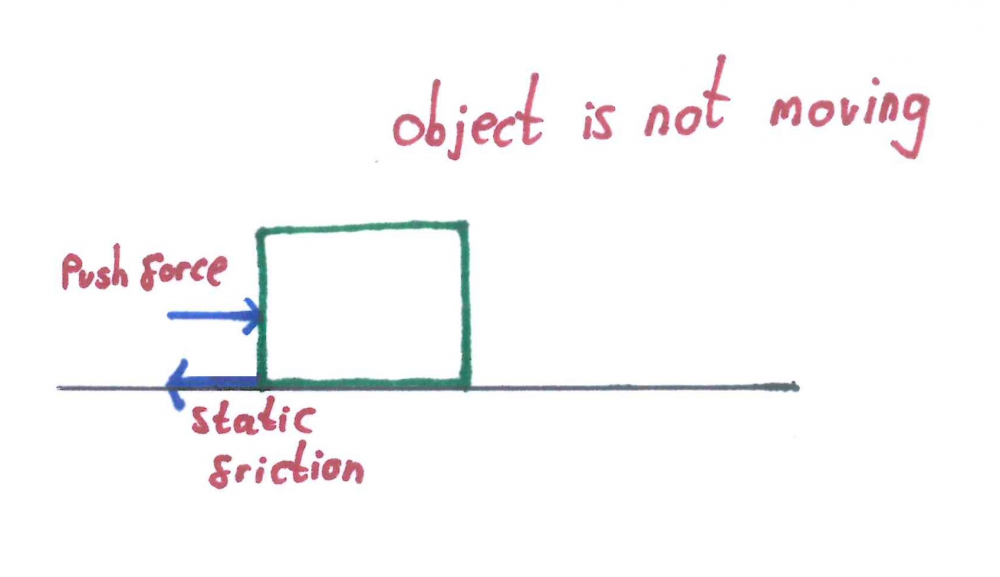All Textbook Topics - Forces and Motion - Friction, Lubrication and Viscosity - Static friction is a force applied to an object by a surface when you try to move the object. The object will only start to move once the force applied is greater than the static friction.
Static friction is a force applied to an object by a surface when you try to move the object. The object will only start to move once the force applied is greater than the static friction.
Static friction occurs on stationary objects.
You experience it whenever you try to push a stationary object, which is free to move, but not enough to cause it to move.

In this diagram, the push force is not enough to cause the object to start moving, as the static friction has increase to be exactly the same size as the push force. The static friction will change to be exactly the same size as the pushing force, until the object starts to move. As this point, dynamic friction applies and there are a different set of rules.
Home experiment:
You can investigate this yourself but putting a heavy book or object on a surface, and push it very gently. You will notice that even though you are pushing, it will not move. This is because you have not overcome the static friction.
If you push it hard enough, you will overcome static friction, and the object will start to move.
All of our textbook pages have associated quizzes. Register for free to access them.
Register For Free